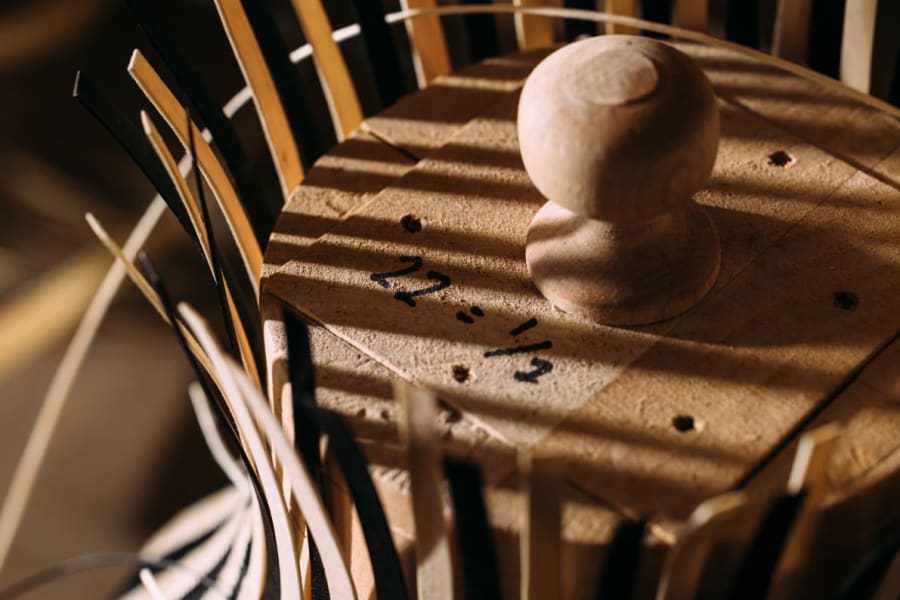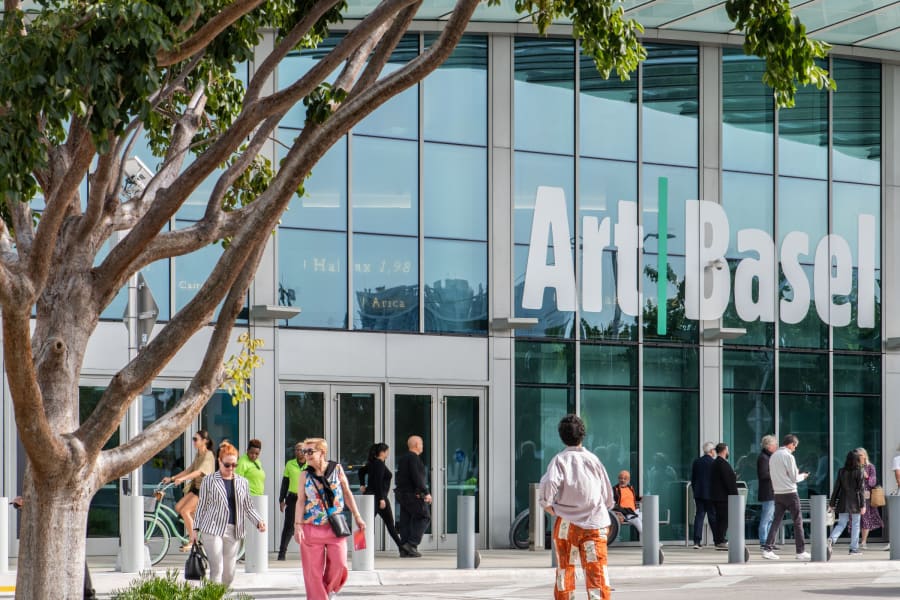Visitors to the Venice Biennale this year discovered what those keeping a close eye on art in Brazil have known for a while: The artists showing in the galleries and exhibition spaces of biennial curator Adriano Pedrosa’s home country have never been so diverse.
In part, this is down to Pedrosa’s day job as the crusading director of the Museu de Arte de São Paulo (MASP), for which every year he picks a theme around which he coordinates 12 months of programming. In 2018, the museum launched ‘Afro-Atlantic Histories’; in 2023, the annual program was titled ‘Indigenous Histories’; and this year, the museum stages ‘Histories of Diversity’, focusing on LGBTQ+ art. Many of the artists exhibited in these shows have since been picked up by the market. As part of ‘Indigenous Histories’, the Huni Kuin Artists Movement (MAHKU) was given a solo show at the institution, and Pedrosa subsequently commissioned them to produce a vast mural on the exterior of the main pavilion in Venice’s Giardini (a work that mythologized the alligator bridge, a huge animal that facilitated a crossing between the Asian and American continents). Now, the collective, who are all members of the Huni Kuin people, will exhibit their work at Art Basel Miami Beach with Carmo Johnson Projects, each painting a preservation of their common ancestral knowledge and a political statement on the ownership of the land.
Indigenous land rights have been the driving force of Claudia Andujar’s work for five decades now. Born to a Hungarian Jewish father, the trauma of the Holocaust inspired Andujar to fight the genocide of Brazil’s first people. She started documenting the lives and battles of the Yanomami with a gaze that eschews straight documentary and instead attempts to capture the cosmology of the community. Now in her 90s, Andujar no longer goes on the extended trips to the Amazon like she used to, but sales of her archive, which will be exhibited by Vermelho in the main section of the fair, maintain her advocacy through Comissão Pró-Yanomami, the organization she co-founded. If Andujar was adept at bringing a non-Western cosmology into the white cube, then it’s an increasingly common phenomenon now — in the last few years, Candomblé, the Afro-Brazilian religion, has become a major reference point for a younger generation of Brazilian artists. Bahia-based Ayrson Heráclito — an artist, theorist and curator who mixes the contemporary and sacred through installation, performance, photography and video — is a key figure.
At Art Basel Miami Beach, the Rio de Janeiro gallery Portas Vilaseca will stage an enigmatic project by Heráclito in collaboration with peer Nádia Taquary and the composer Tiganá Santana. Their installation seeks to operate beyond the white- and Western-coded language of contemporary art to be an immersive forest of sculptures intertwined with cosmological elements. Opening with Taquary’s bronze ‘Yam’ sculpture, representing an offering (ebó) to Ogun (the god who opens paths), it will be a ritualistic praise of the primal deities of the Yoruba pantheon, in which the visitor will pass by Heráclito’s watercolors of orishas’ (a divine spirit in the Yoruba tradition) elements and tools and through a score by Santana (music and drumming play an important part in Candomblé ceremony), ending at a vast wall work painted in dendê oil, a symbolically important ingredient in northeastern cooking.
It is typical of Heráclito to work collaboratively. He has provided much of the theoretical context for the presence of new sacred art in the mainstream artworld. He provides an essay for ‘Bahia Afrofuturista’, for example, a new two-person show opening at Galatea in São Paulo in December, first conceived for the gallery’s second space in Salvador, the state capital of Bahia, featuring the photography of Bauer Sá and the wood sculpture of Gilberto Filho, both of whom have backgrounds in the religion.
Continuing its commitment to the Northeast, in the Positions section of Art Basel Miami Beach, Galatea will be showing the black smithery of José Adário dos Santos, an artist who is one of the most famous and sought-after makers of Candomblé iron statues, those present in the terreiros, the religion’s temples. Previously an artist such as Santos would have been pigeonholed as ‘arte popular’ in Brazil, with prices to match, but now there is a far greater appreciation for makers who have not gone through art school or can easily fit in a European lineage of art history. Galeria Estação has been championing such makers for 20 years now and brings to Miami Beach a typically diverse array of artists with varied educational backgrounds. Among these are Aurelino dos Santos, a Salvador-based artist who does not read or write but expresses the world through his intricately detailed paintings, and Agnaldo, whose sculpture was inspired by the traditional wooden figureheads of the boats that fish the São Francisco River.
Brazilians visiting Art Basel Miami Beach will have been fresh from the opening of this year’s central thematic group show at MASP, dedicated to queer artists and their intersection with questions of class, race and indigeneity. These are themes that resonate in the textile art, photographs, painting, video and installation of Randolpho Lamonier, an artist São Paulo’s Verve gallery will be showing in the Positions section. Born in Brazil’s interior, Lamonier came to attention in 2010 for his Polaroids documenting the queer nightlife he encountered on moving to Belo Horizonte, the state capital of Minas Gerais. His work has crossed media: Although the world is ending, @kinkylatinboy spent the whole night online, just having fun (2021) is a textile collage of satin and leather showing a man masturbating; the title of Ass Fucker (2021), is sewn onto fabric above a textile heart. Yet Lamonier is going beyond the queer subject in his work now, exploring justice and Brazilian politics with a series of text-based textiles that envisage the future: Queer Army Burns Churches And Implements The Secular State In Brazil 2028 (2021), reads one in Portuguese.
When exhibiting, Lamonier veers into a maximalist hang, in which the works are situated in an environment more often featuring neon, chains and deck chairs; it is a method familiar to assume vivid astro focus (AVAF), the collaborative moniker of Eli Sudbrack, a generation older. Showing with Casa Triângulo in the main section of the fair, the installation XI, a gift from the de la Cruz collection, is also the new star attraction at The Bass Museum of Art in the city, a multimedia immersive installation, which, while inspired by the work of the late Felix Gonzalez-Torres, addresses AVAF’s perennial interest in the culture of Brazil’s street and beach parties, perhaps the country’s most democratic spaces. At last, it seems, those showing in the galleries are beginning to reflect a similarly happy mix to the people dancing in the street.
This article was originally commissioned for the 2024 issue of the Art Basel Miami Beach Magazine.
Art Basel Miami Beach will take place from December 6 to 8, 2024. Learn more here.
Oliver Basciano is a journalist, critic Editor-at-large at ArtReview, contributing to Guardian, Telegraph, Financial Times, Folha de S.Paulo, BBC Radio 4, Times Literary Supplement, Art-Agenda, The Spectator, and Private Eye.
Published on November 5, 2024.
Caption for header image: assume vivid astro focus, xi (detail), 2004-present. Gift to The Bass by the Rosa and Carlos de la Cruz Private Collection.


